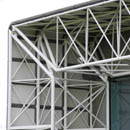Historic Case Study Projects
Centre Georges Pompidou, Paris France
The Georges Pompidou Center in Paris, France was constructed between 1972 and 1977. It was designed by the team of Renzo Piano and Richard Rogers and clearly exemplies the early High Tech use of expressed and exposed steel systems. It might also be considered the "poster child" for the High Tech movement in what the historian Reyner Banham referred to as "the serviced shed".
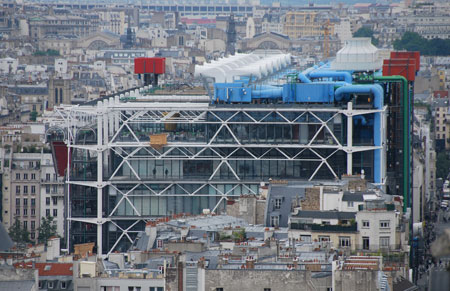 |
Overall view of the Pompidou Centre as viewed from Notre Dame Cathedral. The structural system of trusses that span across the gallery space is clearly evident in this end elevation. To the left a system of "gerberettes" are used to suspend the walkways from the front of the building. To the right the "gerberettes" ar used to support the exposed mechanical systems on the rear of the building. |
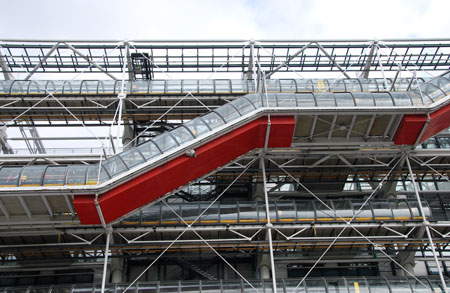 |
The escalators adn walkways are hung from the front of the building using very slender tension members made from solid steel rods. As these members are not subjected to any bending, they can be very small. The compression members of the system are created using hollow structural sections. These can be seen at the bottom of the "slings" that support the walkways. |
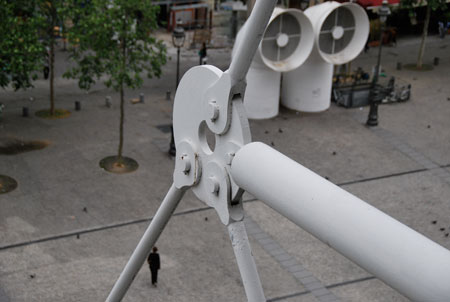 |
In order to resolve multiple members into one point on the sling support for the walkways, a round donut shaped plate is used. The circular geometry is able to easily resolve the varied angles of the incoming members. Bolted pin connections allow for rotation during erection. These connections actually use cotter pins to secure the bolts rather than nuts. |
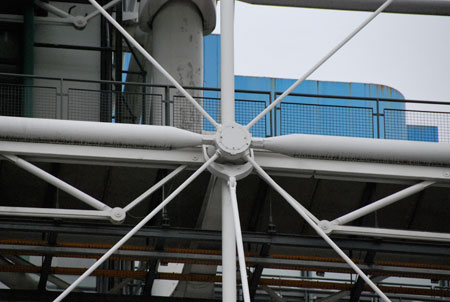 |
The geometry of multiple incoming members along the front face of the building is again resolved using a circular connector. In this case the circle is a short section of hollow member and holes are drilled into the side of the tube to allow the incoming truss and X bracing members to bolt through. A plate is fastened to the front of the circle to clean up the appearance as well as to seal the connections from excessive moisture. It is important that this seal be tight or else water will become trapped within the connection and cause rusting. Otherwise, it is recommended to ensure that the joint is allowed to drain. |
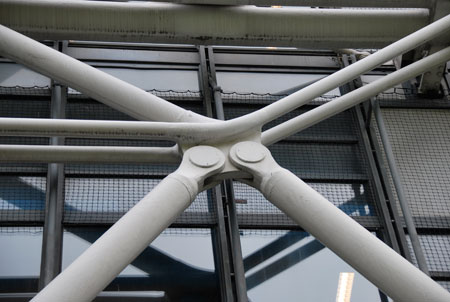 |
This detail shows some of the struts that attach the underside of the truss to the floor below. Here a pin connection is used at the end of a hollow structural member. The truss itself is comprised of smaller round members (some solid and some hollow) that have been fully welded for clean looking detailing. |
